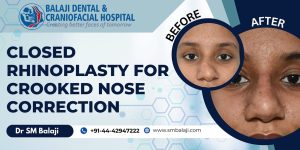[vc_section content_layout=”full” animation_delay=”” disable=”” id=”” class=”” bg_type=”image” bg_image=”” color_overlay=”” enable_parallax=”” enable_pattern=””][vc_row content_layout=”boxed” equal_height=”” animation_delay=”” disable=”” id=”” class=”” bg_type=”image” bg_image=”” color_overlay=”” enable_parallax=”” enable_pattern=””][vc_column layout=”normal” vertical_align=”top” animation_delay=””][vc_column_text]Chennai Based Craniomaxillofacial Surgeon, Prof. Dr. S. M. Balaji of the Balaji Dental and Craniofacial Hospital is invited by the President of the International Cleft Lip and Palate Foundation (ICPF), Prof. Dr. Kenneth Salyer, President, World Craniofacial Foundation to organize a Master class at a conference in Russia.
The International Cleft Lip and Palate Foundation are to organize its annual International conference at St. Petersburg, Russia in the month of July 2020. The ICPF is a world-renowned body and is a multi-disciplinary humanitarian foundation devoted to cleft lip and palate patients. It was established on October 23 1997, at KYOTO, Japan that has members from medical, surgical, speech pathologists, mental health professionals, patient care bodies, geneticists and patients from nearly 67 countries across the world.[/vc_column_text][vc_video link=”https://youtu.be/1TOuL-vwPXA”][vc_column_text]Prof. Balaji was invited by ICPF President Kenneth Salyer to demonstrate the surgical correction of midfacial hypoplasia as a part of their conference. In this course, Prof. Balaji will teach the audience on the correction of midfacial deformities, as a part of syndromes such as Apert syndrome, Crouzon syndrome, and Treacher Collins syndrome with or without cleft lip/palate.
Management of skeletal Class III malocclusion in midfacial hypoplasia is one of the most challenging cases. The cause of this disorder is often multifactorial and often syndromic in nature. The appropriate diagnosis of the condition, age of presentation, the extent of deviation from normalcy dictates the treatment outcomes. There are several treatment methods for managing the skeletal Class III malocclusion with midfacial hypoplasia. Of them, conventional Lefort III advancement is often the preferred treatment. It is usually done after skeletal maturity by age after 23 years.
The procedure carries the risk of a proper split during the mandible, proper plating and subsequent plating. Tooth positioning, jaw spaces are other considerations to be accounted for. The chance of relapse is high owing to muscle memory and pull. In comparison, Distraction Osteogenesis can be carried out during the early second decade of life, account for minor maxillary discrepancies, create new bone, manage the growth vectors efficiently in a controlled fashion. Active post-surgical orthodontics may be required for up to 3 months post-operatively using elastics.
Prof. S. M. Balaji has about three decades of experience in managing a variety of skeletal Class III malocclusion using both Lefort III advancement and Distraction Osteogenesis. Armed with his personal cases, he is to demonstrate and teach the delegates to identify types and complications associated with Craniofacial Skeletal Class III Management, brief on the advantages and disadvantages of Lefort III advancement with Distraction Osteogenesis, help to choose between Lefort III advancement with Distraction Osteogenesis. He aims to teach the delegate to develop a personalized diagnostic and treatment algorithms for management.
[/vc_column_text][/vc_column][/vc_row][/vc_section]





